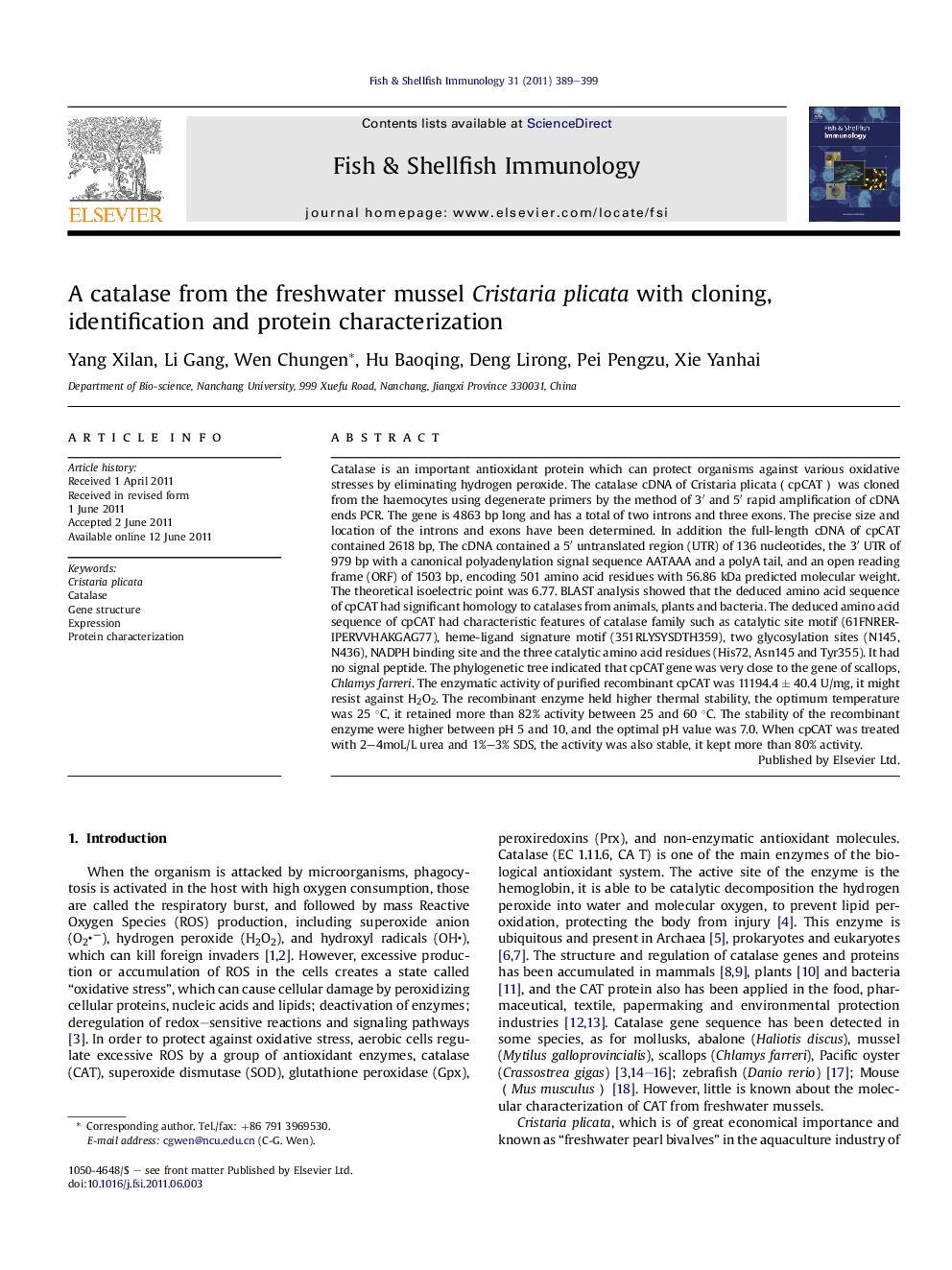| کد مقاله | کد نشریه | سال انتشار | مقاله انگلیسی | نسخه تمام متن |
|---|---|---|---|---|
| 2432418 | 1106794 | 2011 | 11 صفحه PDF | دانلود رایگان |

Catalase is an important antioxidant protein which can protect organisms against various oxidative stresses by eliminating hydrogen peroxide. The catalase cDNA of Cristaria plicata(cpCAT) was cloned from the haemocytes using degenerate primers by the method of 3′ and 5′ rapid amplification of cDNA ends PCR. The gene is 4863 bp long and has a total of two introns and three exons. The precise size and location of the introns and exons have been determined. In addition the full-length cDNA of cpCAT contained 2618 bp, The cDNA contained a 5′ untranslated region (UTR) of 136 nucleotides, the 3′ UTR of 979 bp with a canonical polyadenylation signal sequence AATAAA and a polyA tail, and an open reading frame (ORF) of 1503 bp, encoding 501 amino acid residues with 56.86 kDa predicted molecular weight. The theoretical isoelectric point was 6.77. BLAST analysis showed that the deduced amino acid sequence of cpCAT had significant homology to catalases from animals, plants and bacteria. The deduced amino acid sequence of cpCAT had characteristic features of catalase family such as catalytic site motif (61FNRERIPERVVHAKGAG77), heme-ligand signature motif (351RLYSYSDTH359), two glycosylation sites (N145, N436), NADPH binding site and the three catalytic amino acid residues (His72, Asn145 and Tyr355). It had no signal peptide. The phylogenetic tree indicated that cpCAT gene was very close to the gene of scallops, Chlamys farreri. The enzymatic activity of purified recombinant cpCAT was 11194.4 ± 40.4 U/mg, it might resist against H2O2. The recombinant enzyme held higher thermal stability, the optimum temperature was 25 °C, it retained more than 82% activity between 25 and 60 °C. The stability of the recombinant enzyme were higher between pH 5 and 10, and the optimal pH value was 7.0. When cpCAT was treated with 2–4moL/L urea and 1%–3% SDS, the activity was also stable, it kept more than 80% activity.
► The full-length of the catalase cDNA from Cristaria plicata (cpCAT) was 2618 bp.
► The gene had a total of two introns and three exons.
► The cpCAT belonged to catalase family.
► There was higher thermal, pH stability and anti-denaturation for the recombinant enzyme.
Journal: Fish & Shellfish Immunology - Volume 31, Issue 3, September 2011, Pages 389–399